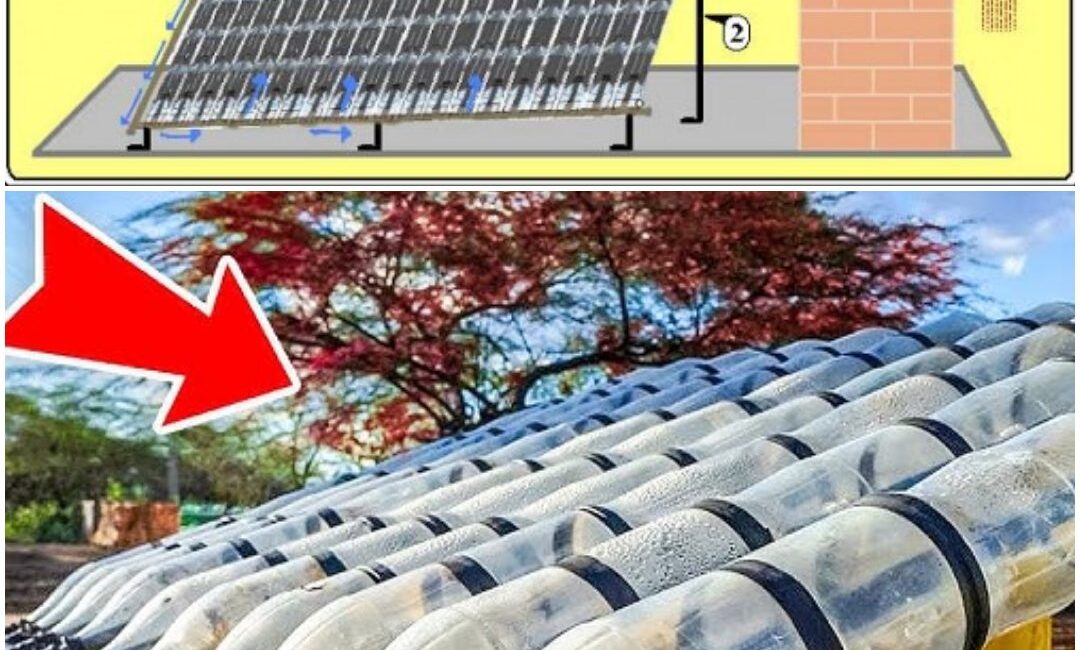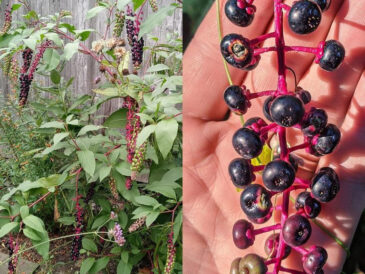- Mount your bottle/pipe assembly on plywood or a rigid board cut to size.
- Use screws or clips to secure the bottles to the board.
- Add foam insulation behind and around the frame to minimize heat loss.
4.4 Positioning & Orientation
- Tilt the panel at an angle matching your latitude plus ~10° seasonal adjustment for optimal sun exposure.
- Face the panel south (in the Northern Hemisphere) or north (in the Southern Hemisphere).
- Ensure it’s firmly anchored—wind or rain should not displace the structure.
4.5 Connect Inlet and Outlet Pipes
- Attach a PVC inlet pipe at the bottom for cold water entry.
- Connect an outlet pipe at the top leading to your tank or point of use.
- Secure with hose clamps and ensure watertight seals using plumber’s tape or silicone if needed.
4.6 Testing & Initial Runs
- Fill the system with water and check for leaks.
- Allow it to sit in full sun, monitoring rising temperatures and circulation.
- Once water flow begins, test hot outlet with a kettle or bucket.
5. Understanding Thermosiphon Circulation
- As sun warms the bottles, water in surrounding PVC warms and becomes less dense.
- Heated water naturally rises to the top outlet while cooler water sinks to the bottom inlet, establishing passive circulation.
- No pumps or electricity needed—perfect for off-grid hot water flow in solar design.
6. Optimizing Performance: Tips and Enhancements
- Increase collection surface: more bottles = more heat absorption.
- Use matte black paint: reduces glare, improves heat capture.
- Thicker insulation: especially behind collectors, cuts conduction losses.
- Add a transparent cover (e.g., plexiglass) to trap heat (greenhouse effect).
- Install a small thermal buffer tank for storing hot water between sunlit hours.
- Use copper tubing within bottles to increase heat transfer if needed.
- Seasonal angle adjustment helps maintain efficiency year-round.
7. Maintenance, Durability & Seasonal Care
- Inspect hoses, clamps, joints and paint annually.
- Replace cracked or heavily warped bottles.
- Clean dust or algae from bottle surfaces to maintain absorption.
- After winter, test circulation again and re‑secure hoses.
- Keep tank inlet closed when not in use to prevent microbial growth.
8. Limitations & Practical Considerations
- Weather dependence: performance drops significantly on cloudy or cold days.
- Thermal capacity limited: only moderate amounts of hot water; not a replacement for large households.
- Material durability: outdoor PET may degrade faster over multiple seasons.
- Safety with plastic: avoid exposing to very high temperatures (>80 °C) or potential BPA leaching—prefer food-grade PET and rinse thoroughly.
9. Real‑World Use Cases & Case Examples
Case Study A: Outdoor Shower Heating
- 80 bottles arranged on a south‑facing wall, insulated foam board backing.
- Heated water reaching ~50 °C by midday—ideal for summer showers in garden or camping.
Case Study B: School Workshop on Renewable Energy
- Students build bottle bank, test temperatures and measure flow rate.
- Display education on recycling, thermodynamics, and sustainability.
Case Study C: Preheat for Laundry or Dishwashing
- Cold water preheated through solar system before entering electric/ gas heater.
- Resulted in reduction of 20–30 % of household hot water energy consumption.
10. Frequently Asked Questions (FAQ)
Q1. How many bottles do I need for useful hot water?
A: 20–30 bottles of 2 L each can deliver 30–50 L of 45–50 °C water in strong sun. More bottles scale up capacity.
Q2. Can plastic bottles release chemicals into the water?
A: With food-grade PET and moderate temperatures, risk is minimal. Avoid prolonged exposure above 80 °C.
Q3. Why not paint inside bottles?
A: Painting outside is safer and achieves radiant heating. Internal paint could contaminate the water supply.
Q4. Can I use black PVC instead of painted bottles?
A: Possible, but painting bottles gives better heat absorption and direct contact between pipe and heat source.
Q5. Is this system compatible with existing heaters?
A: Yes—solar‑heated inlet water can feed into conventional tanks, reducing electricity or gas consumption.
11. Safety and Environmental Considerations
- Use food‑grade PET bottles, clean thoroughly.
- Avoid overheating beyond safe temperature thresholds (<80 °C).
- Secure mounting to avoid structure damage in storms.
- Insulate properly to prevent water freezing or bottle rupture in winter.
- Recycle damaged bottles responsibly and replace them as needed.
12. Conclusion: A Viable DIY Solar Water Heater Solution with Real Impact
Building a solar water heater with plastic bottles is a practical, low-cost way to harness natural sunlight for hot water needs. While it won’t replace professional thermal solar collectors entirely, it is a powerful supplemental system—perfect for sunny climates, DIY enthusiasts, schools, or anyone seeking to reduce energy bills and repurpose materials.
With simple tools, recycled bottles, PVC plumbing, and black paint, you can design a functioning solar water heater that:
- Provides renewable hot water daily
- Demonstrates renewable energy principles
- Reduces your carbon footprint and energy costs
- Teaches sustainability and DIY engineering




